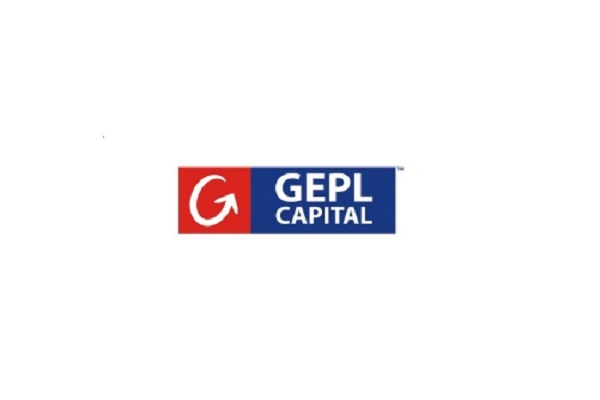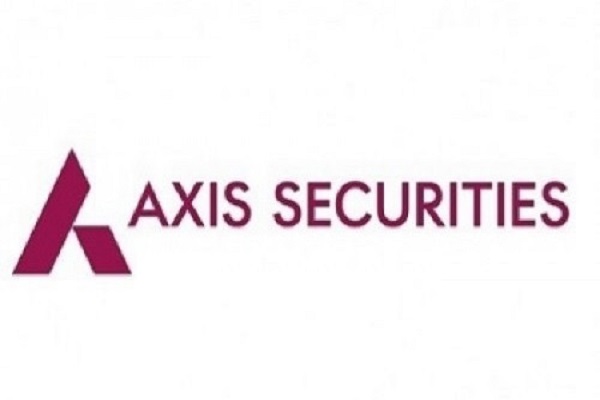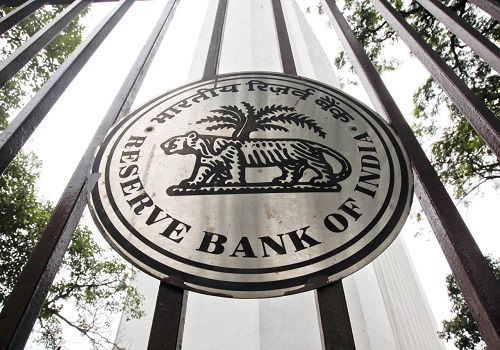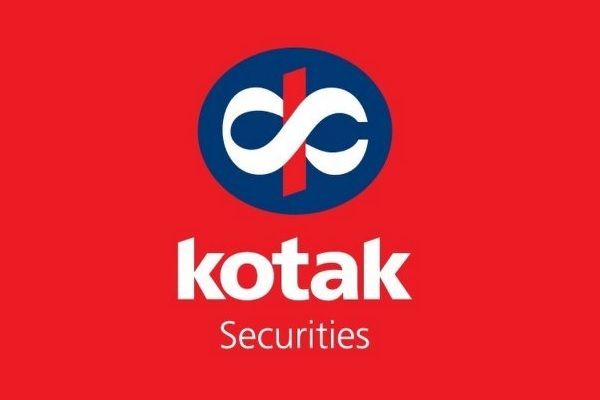Gold trading range for the day is 57415-60435 - Kedia Advisory

Gold
Gold had a strong day, surging by 2.57% to close at 59,408, driven by escalating conflict in the Middle East and the belief that U.S. interest rates may have reached their peak. This led to a drop in U.S. Treasury yields and the dollar, which had strengthened previously due to higher U.S. consumer prices. However, the physical gold market in India took an unexpected turn, moving into a discount as domestic prices rose, discouraging buyers. Dealers in India offered discounts of up to $2 per ounce on official domestic prices, in contrast to the $5 premiums seen last week. There were concerns that higher prices could dampen retail purchases during the upcoming festival season. In China, gold premiums also declined from recent highs, ranging from $40 to $60 per ounce compared to the $80 to $100 charged two weeks ago over global benchmark prices. Commerzbank maintains a positive long-term outlook for gold, with a vision of gold reaching a new record high of around $2,100 per troy ounce by the end of 2024. However, they adjusted their year-end forecast for gold prices from $2,000 to $1,900 per troy ounce. From a technical perspective, the market witnessed fresh buying interest, with a 2.01% increase in open interest, reaching 14,128. Gold prices rose by 1,490 rupees. Support levels for gold are now identified at 58,410 and 57,415, with resistance expected at 59,920, and a possible move towards 60,435.
Trading Ideas:
* Gold trading range for the day is 57415-60435.
* Gold jumped as conflict in the Middle East lifted safe-haven demand for the metal
* Data showed U.S. consumer prices increased in September.
* Commerzbank year-end forecast for gold price has been lowered from $2,000 to $1,900 per troy ounce.
Silver
Silver had a strong day, surging by 3.2% to close at 71,287, driven by increased safe-haven demand due to the escalating conflict between Israel and Hamas. Additionally, hopes for the end of tightening measures by the ECB and the Fed, along with US regulators advocating caution in the recent FOMC minutes, further boosted the precious metal. Concerns persisted over China's fragile economic recovery, with the country's CPI index in September nearing deflationary levels. Simultaneously, the rebound in government bonds supported the equities of solar panel producers, enhancing the outlook for silver as an industrial input. However, the University of Michigan consumer sentiment for the US declined in October, reaching its lowest point in five months. Traders currently estimate a 67% chance of the Fed maintaining interest rates unchanged this year, according to the CME Fedwatch tool. Commerzbank adjusted its silver price forecast to $23 per troy ounce by year-end, down from the previous projection of $26. From a technical standpoint, the market saw short covering, with a significant drop of -32.44% in open interest, settling at 20,031. Silver prices rose by 2,213 rupees. Support levels for silver are now identified at 69,895 and 68,500, with resistance expected at 72,085, and a potential move towards 72,880.
Trading Ideas:
* Silver trading range for the day is 68500-72880.
* Silver prices rose as investors fretted about the escalation in the conflict between Israel and Islamist group Hamas
* Prices was underpinned by expectations of the end of hiking cycle by the Fed despite a slight acceleration in the US inflation rate for September.
* Traders currently see around a 67% chance of the Fed leaving interest rates unchanged this year.
Crude oil
Crude oil had a robust day, surging by 5.26% to close at 7,259. This impressive jump was a result of the U.S. tightening its sanctions on Russian crude exports. These sanctions raised concerns about supply in an already tight market, especially as global inventories are expected to decrease throughout the fourth quarter. The U.S. imposed sanctions on owners of tankers carrying Russian oil priced above the G7's price cap of $60 per barrel, closing loopholes in the mechanism aimed at penalizing Moscow for its Ukraine invasion. In a different context, OPEC maintained its forecast for growth in global oil demand, citing signs of a resilient world economy this year and anticipating further demand increases in China. Meanwhile, U.S. crude oil production reached a record 13.2 million barrels per day, surpassing the previous peak set in 2020 before the pandemic hit oil demand hard. This record U.S. output coincides with Saudi Arabia and Russia extending their voluntary supply cuts above OPEC+ curbs. In the week ending October 6, U.S. oil production reached 13.2 million barrels per day, marking the highest level since March 2020. From a technical perspective, the market witnessed short covering, with a significant drop of -43.89% in open interest, settling at 5,356. Crude oil prices rose by 363 rupees. Support levels for crude oil are now at 7,054 and 6,850, while resistance is expected at 7,370, with the potential for prices to test 7,482.
Trading Ideas:
* Crudeoil trading range for the day is 6850-7482.
* Crude oil rose as U.S. tightened its sanctions programme against Russian crude exports.
* US had imposed sanctions on tankers carrying Russian oil
* OPEC expects crude stockpiles to fall this quarter
Natural gas
Natural gas experienced a decline of -2.76%, settling at 270.8, primarily due to increased output, a drop in exports to Mexico, and forecasts of mild weather through late October, which are expected to reduce heating and cooling demand. In the Lower 48 U.S. states, gas output reached 103.1 billion cubic feet per day (bcfd) in October, matching the monthly record high set in July. With cooler weather on the horizon, U.S. gas demand, including exports, is predicted to rise. Pipeline exports to Mexico decreased to 6.9 bcfd in October from a monthly high of 7.2 bcfd in September. Additionally, natural gas production in North Dakota reached a record 3.303 bcfd in August. However, the amount of gas flared also increased, contributing to a 5% flaring rate. According to the International Energy Agency (IEA), global natural gas demand is expected to grow more slowly, with an average annual increase of 1.6% from 2022 to 2026, in contrast to the 2.5% annual rise between 2017 and 2021. This slower growth is influenced by mature markets like Europe and North America, where demand peaked in 2021. From a technical standpoint, the market saw fresh selling interest, with a significant 19.13% increase in open interest, settling at 20,959. Natural gas prices decreased by -7.7 rupees. Support levels for natural gas are now at 266.6 and 262.4, with resistance likely at 276.4, and the potential for prices to test 282.
Trading Ideas:
* Naturalgas trading range for the day is 262.4-282.
* Natural gas fell on rising output, a drop in exports to Mexico
* Pressure also seen amid forecasts for mild weather through late October that will keep heating and cooling demand low.
* Average gas output in the Lower 48 U.S. states rose from 102.6 bcfd in September to 103.1 bcfd so far in October
Copper
Copper saw a slight dip of -0.25%, settling at 698.15, mainly due to rising inventories in LME-registered warehouses, which reached the highest levels since October 2021, at 181,150 tons. This increase was influenced by China's central bank's close monitoring of existing policy effectiveness and its ability to support the economy. In addition, copper inventories in Shanghai Futures Exchange warehouses rose significantly, indicating a 45.9% increase from the previous release. China's copper imports also declined by 5.8% in September year-on-year, largely attributed to robust domestic production and limited demand for overseas supplies. The Golden Week holiday season traditionally boosts industrial activity and consumer spending. For the first nine months of 2023, China's imports of unwrought copper and copper products fell by 9.5% compared to the previous year. However, the demand for copper ore and concentrate saw a rise, with imports increasing by 7.8% in the same period. From a technical perspective, fresh selling interest was observed, with a 3.65% increase in open interest, settling at 8,725. Copper prices declined by -1.75 rupees. Support levels for copper are currently at 695.4 and 692.5, while resistance is expected at 702.4, with the potential for prices to test 706.5.
Trading Ideas:
* Copper trading range for the day is 692.5-706.5.
* Copper dropped after LME inventories climbed to the highest since October 2021.
* China's central bank says it has ample room to support economy
* China September copper imports at 480,426.4 tonnes
Zinc
Zinc saw a minimal decline of -0.02%, settling at 220.15, primarily due to a dim economic growth forecast and rising metal inventory. The International Lead and Zinc Study Group (ILZSG) predicts surpluses in the global refined zinc market for 2023 and 2024, with a surplus of 248,000 tons and 367,000 tons, respectively. Global demand for refined zinc is expected to rise by 1.1% in 2023 and 2.5% in 2024, reaching 13.93 million tons. Refined zinc production is also forecasted to increase significantly, primarily driven by China. Zinc inventory on the LME has grown to 99,100 tonnes from 30,475 tonnes at the beginning of the year. In China, consumer prices remained flat in September, while factory-gate prices saw a slower decline. Despite signs of stabilization in the Chinese economy, concerns about the strength of the recovery persist. From a technical perspective, long liquidation was observed, with a -4.82% drop in open interest, settling at 3,436. Zinc prices decreased by -0.05 rupees. Support levels for zinc are currently at 219.6 and 219, with resistance expected at 220.8 and a potential move toward 221.4.
Trading Ideas:
* Zinc trading range for the day is 219-221.4.
* Zinc dropped amid gloomy economic growth forecast and rising metal inventory.
* China's Sept consumer prices flat, factory deflation persists
* Global refined zinc markets are likely to see surpluses in both 2023 and 2024
Aluminium
Aluminium faced a 0.25% decline, closing at $203.05, due to a bleak outlook. The supply-demand balance looks unfavorable. LME aluminium stocks have steadily increased since the start of the year, now at 502,850 tonnes, up by 12%. This marks a 53% rise from the previous year when only 328,600 tonnes were in LME warehouses. The most significant growth occurred in Gwangyang, South Korea, with stocks skyrocketing from 24,025 tonnes in January to 264,400 tonnes, an astounding 1,000% increase. This surge in availability on the market has pushed aluminium premiums lower. Additionally, China's aluminium exports dipped to 471,298.80 tonnes in September, down from August's 490,131.60 tonnes. Despite this, China's trade indicators showed signs of stabilization, possibly due to government policy measures. However, China is still grappling with challenges like deflationary pressure, a property crisis, global economic slowdown, and geopolitical tensions. From a technical perspective, the market saw fresh selling pressure with a 0.24% increase in open interest, settling at 3696. Prices fell by -0.5 rupees. Support for aluminium is currently at 202.7, and if it breaks, a test of 202.2 is likely. On the upside, resistance stands at 203.9, and a break above could lead to testing 204.6.
Trading Ideas:
* Aluminium trading range for the day is 202.2-204.6.
* Aluminium dropped as the outlook for the commodity worsened, with supply set to outweigh demand
* LME stocks are currently sitting at 502,850 tonnes, a 12% increase from 447,250 tonnes at the beginning of the year
* China exported 471,298.80 tonnes of unwrought aluminium and aluminium products, in September, down from August's 490,131.60 tonnes.
Cottoncandy
Cottoncandy closed 0.75% higher at 59,100 in response to the USDA's October WASDE report, which reduced U.S. cotton production in the 2023/24 season to 12.8 million bales, mainly due to lower yields in Texas. This announcement carried significant implications as the USDA projected that Brazil would surpass the U.S. in cotton production for the first time in history and come close to exceeding U.S. cotton exports for the first time since the 19th century. Meanwhile, Australia saw a surge in its cotton exports to China, with 61,319 metric tons valued at $130 million in August. This uptick was attributed to normalized trade relations between the two countries. In India, the Cotton Association of India (CAI) provided its final estimate for the 2022-23 cotton season, raising the production estimate to 31.8 million bales, up from its previous estimate of 31.1 million bales in July. This estimate is slightly higher than the government's third advance estimate of 34.3 million bales for the same season. For the upcoming 2023-24 cotton season, India anticipates a production of 330-340 lakh bales, beginning on October 1. Technically, the cotton market saw short covering, with open interest remaining unchanged at 108. Prices rose by 440 rupees, with support at 58,900 and the potential to test 58,700. On the upside, resistance is likely at 59,300, and a move above could push prices to 59,500.
Trading Ideas:
* Cottoncandy trading range for the day is 58700-59500.
* Cotton prices gains after USDA cut U.S. production in 2023/24 to 12.8 million bales.
* The USDA also said Brazil's cotton production in 2023/24 will exceed that of the United States for the first time
* Australia's exports of cotton to China ballooned to 61,319 metric tons worth $130 million in August
* In Rajkot, a major spot market, the price ended at 27589.15 Rupees dropped by -0.2 percent.
Turmeric
Turmeric's recent price performance saw a decline of 2.68%, closing at 13,778. This dip can be attributed to improved crop conditions resulting from favorable weather. Despite this, concerns persist regarding potential yield losses due to anticipated unfavorable weather conditions in October. Currently, crop conditions are deemed satisfactory, and the harvest is expected between January and March. A notable increase in turmeric demand, both in developed and emerging markets, has led to a 25% boost in exports. However, expectations of a 20-25% reduction in turmeric seeding this year, especially in regions like Maharashtra, Tamil Nadu, Andhra Pradesh, and Telangana, reflect shifts in farmers' priorities. Between April and July 2023, turmeric exports experienced a 15.05% increase, totaling 71,616.77 tonnes compared to the same period in 2022. However, July 2023 witnessed a 24.60% drop in exports compared to June 2023. In contrast, July 2023 showed an 8.05% increase in exports compared to July 2022. From a technical perspective, the turmeric market observed fresh selling, with open interest rising by 5.23% to reach 12,475. This surge in open interest suggests active trading in the market. Prices declined by 380 rupees. Support levels for turmeric are currently at 13,494, with the potential for prices to test 13,210. On the upside, resistance levels may be observed at 14,204, and a move above this level could push prices to 14,630.
Trading Ideas:
* Turmeric trading range for the day is 13210-14630.
* Turmeric dropped amid improved crop condition due to favorable weather condition.
* Crop condition is satisfactory and it will be ready for harvest ready for harvest during January to March.
* Support is also evident for improved export opportunities.
* In Nizamabad, a major spot market, the price ended at 13705.6 Rupees gained by 0.49 percent.
Jeera
Jeera's price performance witnessed a 1.74% increase, closing at 55,670. This rise can be attributed to a modest recovery in the market, driven by the limited availability of quality crops. However, the upward potential is constrained by sluggish export demand. Global demand for Indian jeera has dwindled as buyers have favored other origins like Syria and Turkey, mainly due to the relatively higher prices of Indian jeera. The export outlook for jeera in the coming months is not very promising, in line with seasonal patterns. Despite Indian jeera being competitively priced in the global market, this has not significantly boosted overseas demand. The potential of China resuming its purchases of Indian cumin in October-November, just before the new cumin crop arrives, introduces an element of uncertainty to the market's dynamics. In terms of recent export performance, jeera exports between April and July 2023 fell by 7.99%, totaling 61,697.44 tonnes compared to the same period in 2022. In July 2023, there was a 20.30% decline in exports compared to June 2023, with 8,297.79 tonnes exported. This drop was even more pronounced when compared to July 2022, with a substantial 58.23% reduction in exports. From a technical viewpoint, the jeera market saw fresh buying, with open interest increasing by 3.13% to reach 4,344. Prices surged by 950 rupees. Support levels for jeera are currently at 54,810, with the potential to test 53,950. Resistance levels may be observed at 56,340, and a move above this level could push prices to 57,010.
Trading Ideas:
* Jeera trading range for the day is 53950-57010.
* Jeera gains on low level recovery amid limited availability of quality crop.
* Global demand of Indian jeera slumped as most of buyers preferred other destinations like Syria and Turkey
* Export is likely to remain down in upcoming months as per the export seasonality.
* In Unjha, a major spot market, the price ended at 56884.95 Rupees dropped by -0.19 percent.
Views express by all participants are for information & academic purpose only. Kindly read disclaimer before referring below views. Click Here For Disclaimer










Tag News

Quote on Gold 30th December 2025 by Jateen Trivedi, VP Research Analyst - Commodity and Curr...












